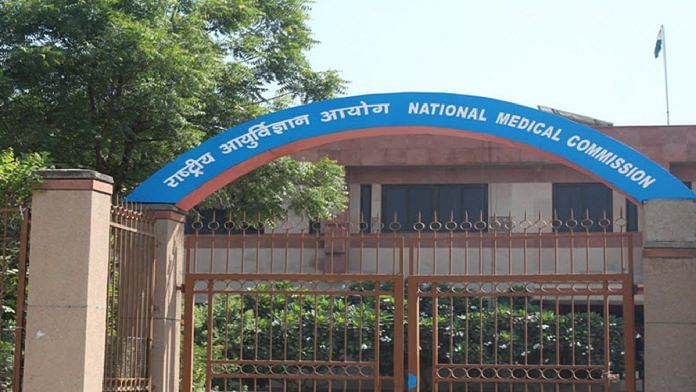New Delhi: Early clinical and patient exposure, on-ground training and community medicine. This is what the National Medical Commission (NMC), India’s apex regulatory body for medical education, wants undergraduate medical students to focus on as it aims to make the MBBS course more “learner-centric, patient-centric, gender- sensitive, outcome-oriented and environment appropriate”.
On 12 June, the NMC released its new guidelines for medical education, which will be applicable from the next academic year. Called the Graduate Medical Education Regulation (GMER), 2023, the guidelines — coming 25 years after the last set — have incorporated several new components into the MBBS curriculum.
According to the NMC, the GMER is aimed at ensuring that a medical student can function “appropriately and effectively as a physician of first contact of the community while being globally relevant”.
Among the most significant changes in the curriculum are the requirement for students to adopt and track rural families and the dropping of supplementary batches — a system that allows students who fail to clear university exams to appear for supplementary exams six months later.
ThePrint looks at the new elements included in the GMER.
Also Read: ‘Our doctors should train here, not abroad’: Mandaviya urges pvt hospitals to start UG, PG courses
All subjects are now classified as ‘clinical’
While the current coursework distinguishes between clinical, preclinical and paraclinical subjects with no practical training, there will be no such distinctions under the new guidelines, which categorise all topics as clinical.
In addition, the 4.5-year-course will be divided into three phases, of which the first two will each be a year long. Phase III will be divided into two parts, with the first taking a year and the second taking 18 months.
The first phase will involve a foundational course, subjects such as anatomy, physiology, biochemistry, an introduction to community medicine and humanities.
The course will also focus on professional development and include, among other things, village outreach, pandemic module and early clinical exposure. It will also involve “simulation-based learning” or using dummy patients to train students, according to the guidelines.
The second phase will include subjects such as pathology, pharmacology, microbiology, and family visit under community medicine, general surgery, general medicine, obstetrics and gynaecology. Subjects such as forensic medicine and toxicology will also be taught.
No supplementary batches
The new course will also do away with supplementary batches. According to the new guidelines, it’s mandatory for medical education institutions to hold supplementary examinations within three to six weeks of the date of declaration of the results of the main examination, so that candidates who pass can join the main batch the next year.
Currently, students who fail in a given year are treated as a supplementary batch, and a separate examination is held for them.
A student failing a supplementary examination in the first year can join the subsequent academic year, the new guidelines say.
Family adoption programme
One of the major changes in the coursework is the focus on practical training and early clinical exposure. The new guidelines lay down mandatory family adoption as part of the curriculum. Under this, students are required to look after five families near their medical colleges from the very start of their course.
This marks a significant departure from the existing norm. Currently, the subject of community medicine in MBBS courses includes training at the Rural Health Training Centres affiliated to every medical college. Students are required to train there throughout their 4.5 years of medical education to help get them acquainted with community-oriented primary healthcare centres and India’s rural healthcare system.
The new rule, according to a senior official who is part of the NMC’s Under-Graduate Medical Education Board, is modelled after the practice followed by India’s first rural medical college, the Mahatma Gandhi Institute of Medical Sciences in Sevagram, Maharashtra.
“We thought that a group of students should be allotted a number of rural households and they would be responsible for keeping their health records, tracking their health status and identifying the need for medical intervention when required for three to four years,” the official said.
As a result, students are now expected to understand the dynamics of the rural setup of the region, participate in government-sponsored screening and health-related education programmes, and learn to analyse patient data from their very first year.
By their second and third years, medical students are expected to become the first points of reference for their adopted families by continuing to actively monitor their health conditions and analysing how their involvement is helping local communities.
In the fourth year, all MBBS students will be expected to prepare and present a comprehensive report of the families’ current health status and their own engagement with them.
(Edited by Uttara Ramaswamy)
Also Read: ‘It’s a waste’— Students who finished China MBBS online struggle with 2-yr internship, no stipend



